- Any questions about what we went over last time?
- A reminder that we'll have a quiz over the Basic Classes of
Functions section today, at the end of the hour. I
usually allow 20 minutes for this.
You're welcome to remind me if it gets to 2:35 and I show no sign of stopping!:)
- Also that tomorrow we will be in MP306, for our first session with Mathematica.
- finished the tiny review of Calc I
- went over the section Vol 1, Sec. 1.2: Basic Classes of Functions, and identified some of the high points (different classes of functions, mathematical modeling, and transformations).
- we ended class with the Checkpoint 1.15, and used the Floor function to
write it. A couple of things came up as you all headed out the door:
I used some symbols that folks aren't familiar with:
- Some sets of numbers are given in shorthand:
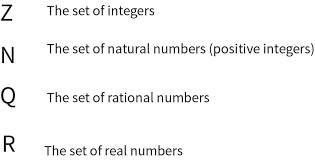
These are often given in script, or in bold, or with extra lines drawn in them, e.g. \(\mathbb{Z}\)
\(\mathbb{N}\)
\(\mathbb{Q}\)
\(\mathbb{R}\)
- \(\in\) -- "is an element of". So it is true that \(\pi \in \mathbb{R}\).
- \(\notin\) -- "is not an element of". So it is true that \(\pi \notin \mathbb{N}\).
- Some sets of numbers are given in shorthand:
- Let me start by forming some groups of three, so that you can work together
today. We'll do the same thing tomorrow (although I'll just
have you work in pairs tomorrow).
- Inverses, key points:
- A function is invertible on its domain if and only
if the function is one-to-one on that domain.
A function \(f\) is one-to-one provided that no two distinct inputs lead to the same output: \[ f(x_1)=f(x_2) \implies x_1=x_2 \]
Our authors say it differently, but it means the same thing:

I think that the first form leads us more naturally to the horizontal line test:
- The horizontal line test determines whether an inverse
even exists (whether the function is one-to-one, which
permits its invertibility):
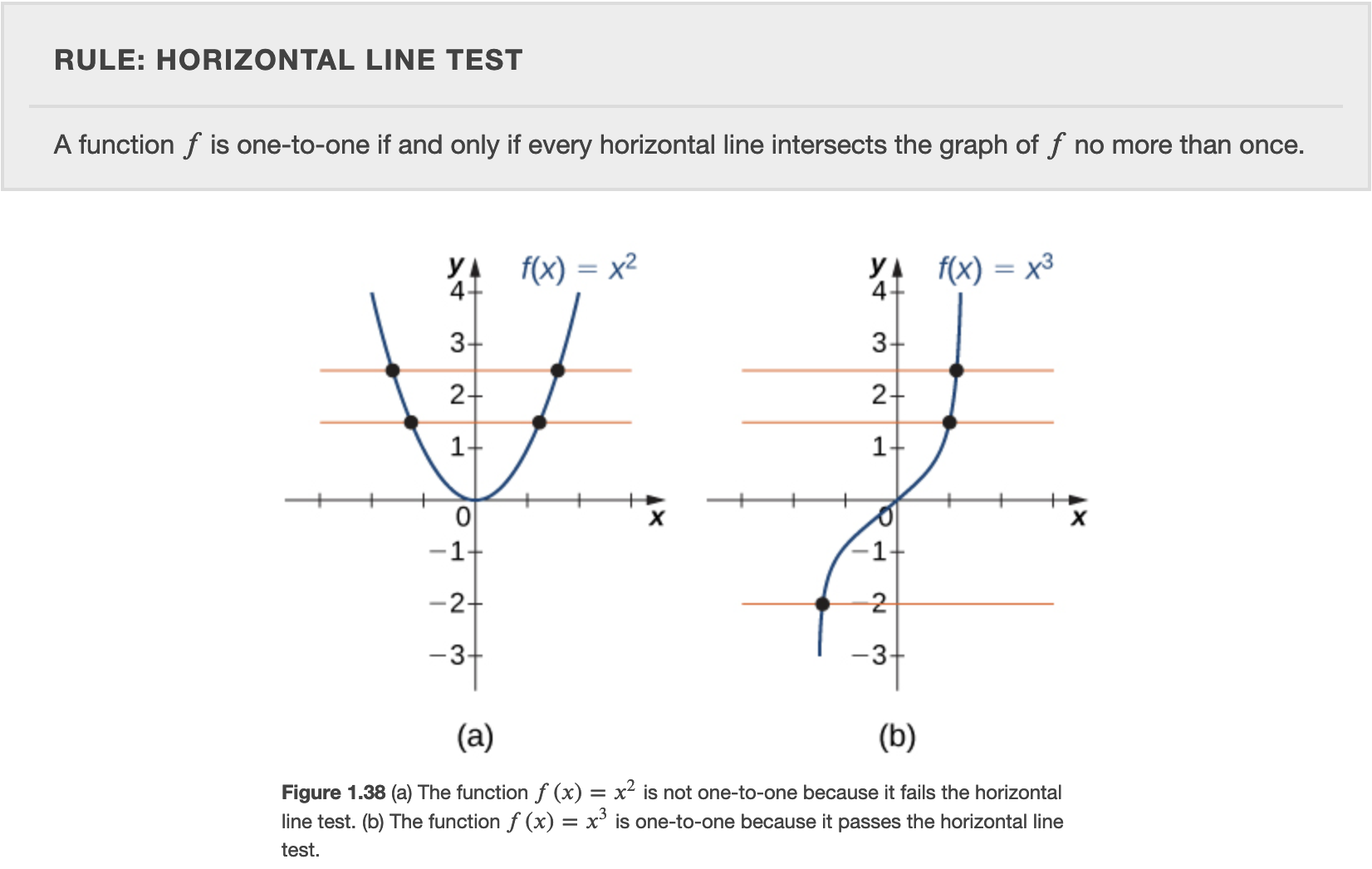
- A graphic representing the action of the function and its inverse:

The important thing to note is that, while the two compositions \[ f^{-1}(f(x)) = x \] and \[ f(f^{-1}(y)) = y \] appear to be very similar, their domains and ranges are reversed: the first composition takes \(x\) back to \(x\), whereas the second composition takes \(y\) back to \(y\).
One is the "identity function" on the domain, whereas the other is the identity function on the range.
For you to do: Did you notice the graph of the floor function in your reading?
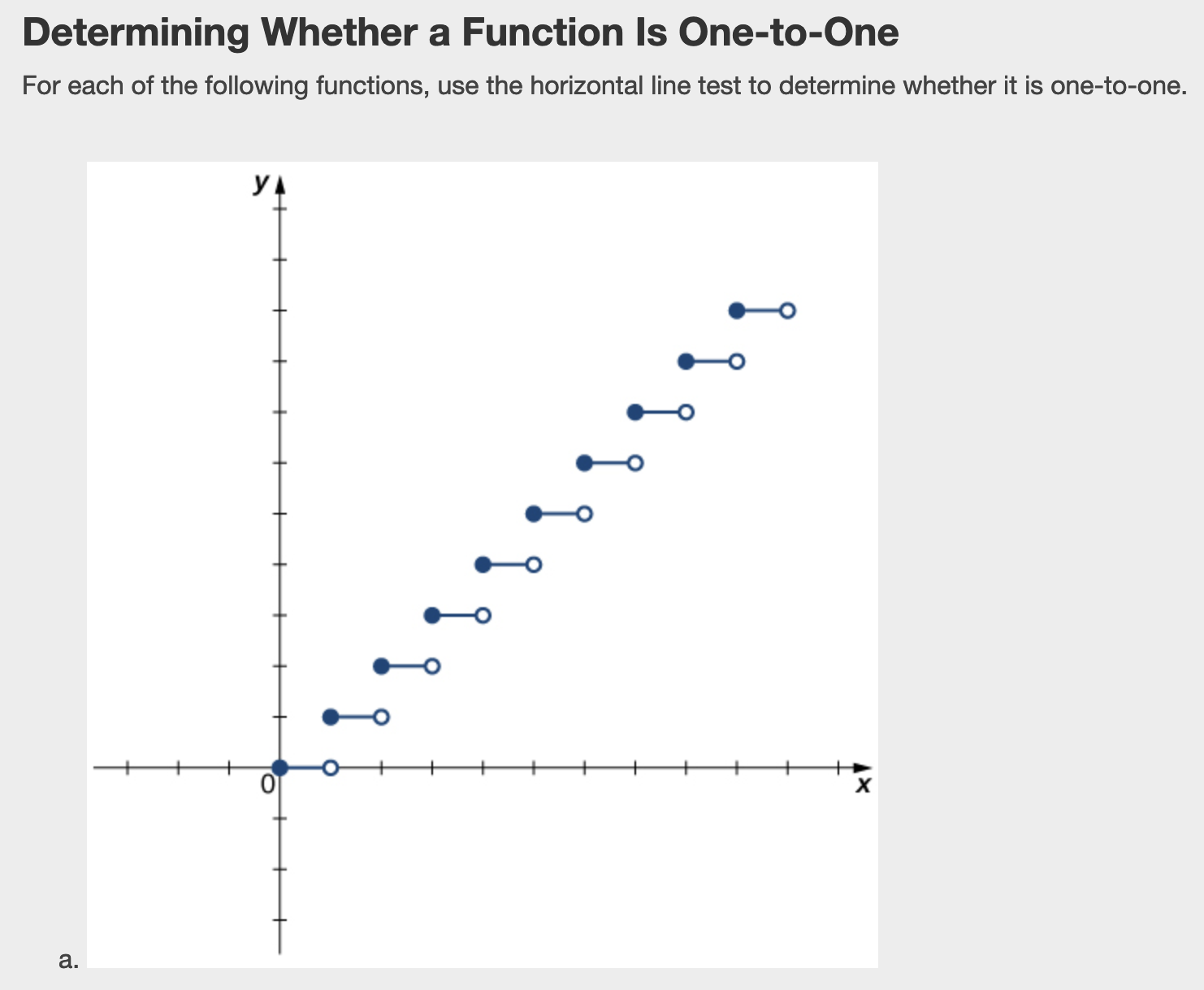
- What is its domain?
- What is its range?
- Is it one-to-one?
- Is it invertible?
- What is its domain?
- Graphing the inverse is easy if you have the graph of the
function itself:
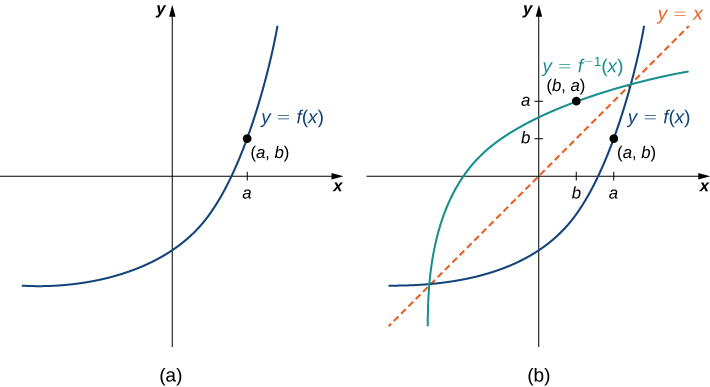
Just reflect the graph of \(f\) about the mirror line \(y=x\) to get the graph of \(f^{-1}\).
Notice that wherever the function crosses the mirror, the inverse does at the exact same spot: if you kiss a mirror, the reflection kisses you back!
For you to do: Let's look at the worksheet, and
- Draw the inverse of that first function. Does anyone recognize it? Note where it touches the mirror. Also how asymptotes are reflected.
- We can do the two bottom functions on the other side, too: what is surprising about the one on the bottom left? What do we conclude about the function \(f(x)=\frac{1}{x}\)?
- We restrict the domain on non-invertible functions
to create an "artificial inverse" in some important cases (e.g. trig functions):
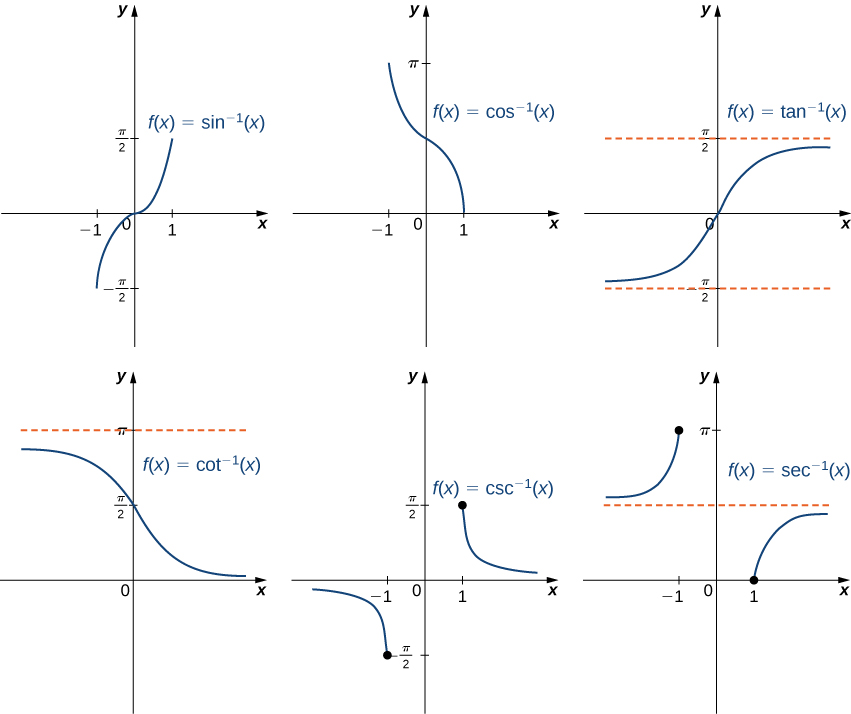
For you to do: Use your transformation skills to find an identity equation (or maybe two!) linking
- \(\sin^{-1}(x)\) and \(\cos^{-1}(x)\)
- \(\tan^{-1}(x)\) and \(\cot^{-1}(x)\)
- \(\csc^{-1}(x)\) and \(\sec^{-1}(x)\)
The upshot is that there are really only three distinctively different functions here -- the others are sort of redundant....
- A function is invertible on its domain if and only
if the function is one-to-one on that domain.
- Let's try a few more problems from the section:
- Checkpoint 1.24: domains and ranges of inverses.
- Checkpoint 1.25: sketching the inverse of a linear function.
- Checkpoint 1.26: restricting a function to create an inverse
- Inverses Handout: one-to-one functions, invertible functions, using the mirror, trig inverses and transformations